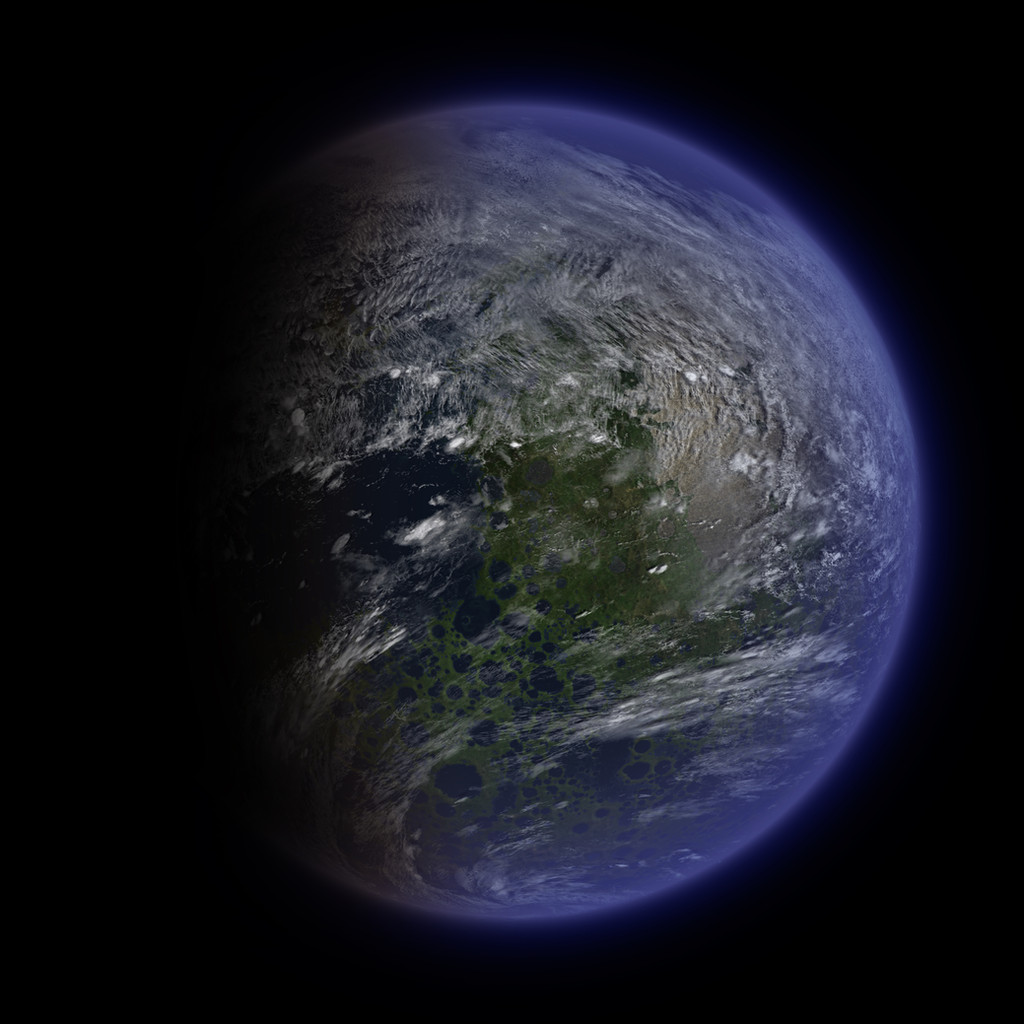HOME | DD
 Ittiz — Luna Terraformed Realistic
Ittiz — Luna Terraformed Realistic

Published: 2009-12-14 17:45:04 +0000 UTC; Views: 7097; Favourites: 59; Downloads: 674
Redirect to original
Description
Redid the atmosphere like the Mars and Venus imagesRelated content
Comments: 25

Of all the arts I've seen from our terraformed moon, yours is the best. I've also thought about how to accomplish this feat.
👍: 0 ⏩: 0

This is awesome...
I hope they choose to try and terraform the Moon before Mars; the Moon would be much easier and quicker.
👍: 0 ⏩: 0

I've always wished I could look up and see a fertile world in our sky at night... Good job.
👍: 0 ⏩: 1

That would be quite a sight to behold indeed. It does look funny with all the crater lakes.
Doesn't seem possible with such a small body though...
👍: 0 ⏩: 2

the only thing Humanity would need as far as technology goes is a device that can increase the mass(not size btw) of objects like planets. in turn it would start a reaction that would allow for the Core of luna to start spinning, creating an Amostphere and keeping it would be tricky but with the core spinning again it would pretty much sustain itself though i would have to say that Massive atmosphere generators would have to be scattered on the surface and constantly flowing. if those aren't there then the atmo would eventually disappear no matter how fast the core is spinning.
so yeah size has alot to do with it but its not impossible.
👍: 0 ⏩: 1

Increasing the moon's mass would increase tidal forces on Earth. If I'm not mistaken then not only would sea level rise and fall be more extreme but Earthquakes may be more frequent and/or severe. Correct me if I'm wrong.
As for giving the moon some kind of atmosphere to begin with, I thought about the moon having a Xenon atmosphere because it's the heaviest gas that is non-decomposable. For Xenon to leak out, temperatures at the upper reaches at least, should be well into the 20 000s Kelvin. The purpose of a Xenon atmosphere would be for the surface to have some pressure in the first place and with uneven heating of the atmosphere creating wind, temperature swings should be less extreme and should provide at least some protection from cosmic rays and even eliminate the problem of flying lunar dust and debris. Enclosed habitats would still be necessary but if the pressure outside is just a little lower than standard pressure inside, should there be any leaks, air would be leaking out instead of the poisonous Xenon leaking in, which should buy someone time to repair and evacuate if needed.
Just a theory.
👍: 0 ⏩: 2

Heh, didn't even notice these replies since I was in the middle of buying a house at the time. I've done a lot of speculating how to build a retainable atmosphere on the moon and considered Xe. However it seems it creates effects on humans like Nitrous. The theory is that it form clathrates with water in the human body causing the effect. I also used to think of using SF6 an inert gas that is even heavier than Xe and engineering some microbial systems to mop up and reprocess the decomposition products. How ever recently I have come up with ideas using a completely biological system to retain the atmosphere with maybe only using SF6 to increase the stratifying forces in the atmosphere if the weight of O2 isn't enough by itself.
👍: 0 ⏩: 0

i didnt even think of that O_O nevermind.
i feel a bit dumb now btw haha
btw its a great theory, you seem to have really thought about this
👍: 0 ⏩: 1

Eh, don't bother yourself. You've learned something new.
Well... I thought at first that radiation was solely responsible for gas leaking but it turned out that the atoms/molecules have to move faster than the object's escape velocity for it to escape the object's gravity so it becomes a question of temperature. The part radiation plays is splitting molecules into individual pieces which can move faster with the same kinetic energy and thus are more easily able to leak out of a planet/moon. This is why gases like water vapor, oxygen and nitrogen, etc are especially vulnerable. This also makes it clear why a planet is capable of losing its atmosphere with a big enough meteor impact.
I like to think about these things as I can better imagine what is possible. It's helping me with the sci-fi story I'm working on.
👍: 0 ⏩: 0

You never know, a few hundred years ago many of the things we have today were thought completely impossible. My background is molecular biology and I've thought a of few biologically based techniques that may work. But I don't have the super computer to run the simulations
👍: 0 ⏩: 1

Ah, but of course. Like all of the other broken impossibilities, it will surely be through the use of techniques we cannot fathom today. I really have no idea what must be done for the moon to keep such an atmosphere.
👍: 0 ⏩: 1

Oh I believe they can be fathomed today. Just no one has made all the connections needed. Consider this simple example, pre-sliced bread is a rather modern invention. But bread and the knives used to slice it have existed for some 12 thousand years.
👍: 0 ⏩: 1

Heh... Will it take that long to make all those connections?
Say... Are you saying you have an idea how the moon will be able to keep an atmosphere?
👍: 0 ⏩: 1

a quote from me a few lines above "I've thought a of few biologically based techniques that may work. But I don't have the super computer to run the simulations"
👍: 0 ⏩: 1

Oh right... How silly of me.
Well, good luck with that. I am curious to hear more of it in detail but only if you have the time for it, alright?
👍: 0 ⏩: 0

Thanks, tried to increase the accuracy, but it's hard to say exactly what the atmosphere on a world that small would look like.
👍: 0 ⏩: 1

Propably very dense. To keep it they will propably fill it with Argon or other gas from this group(I don't know how you call them in english). They are heavy and keep it. What bodder me is how they live on a world where day and night longs two weaks respectivly.
👍: 0 ⏩: 1

Argon weighs around the same as diatomic oxygen but is almost completely inert, it would be extremely hard to retain it. Xenon how ever could probably be held down because of it's high atomic weight. Although it would probably only be a detriment because it would force oxygen up away from the surface. There is also Sulfurhexafloride which humans can breath but is not completely inert and is the heaviest breathable gas know. It could be reacted with oxygen in the upper atmosphere to keep the oxygen in but the byproducts are deadly to humans. This only scratches the surface of the subject.
How do people live in the polar regions on Earth where the sun goes down for 3 months? I don't think it's as much of a bother. At least the weather on the Moon would be fairly uniform and warm.
👍: 0 ⏩: 1

In other news, terraforming small moons is pointless. Becouse they will always let out atmosphere. Hovewer they can always fill in atmosphere if this is needed.
👍: 0 ⏩: 0

For some reason, I find myself wondering how the terraformed Luna would appear from Earth during a lunar eclipse.
👍: 0 ⏩: 1



























